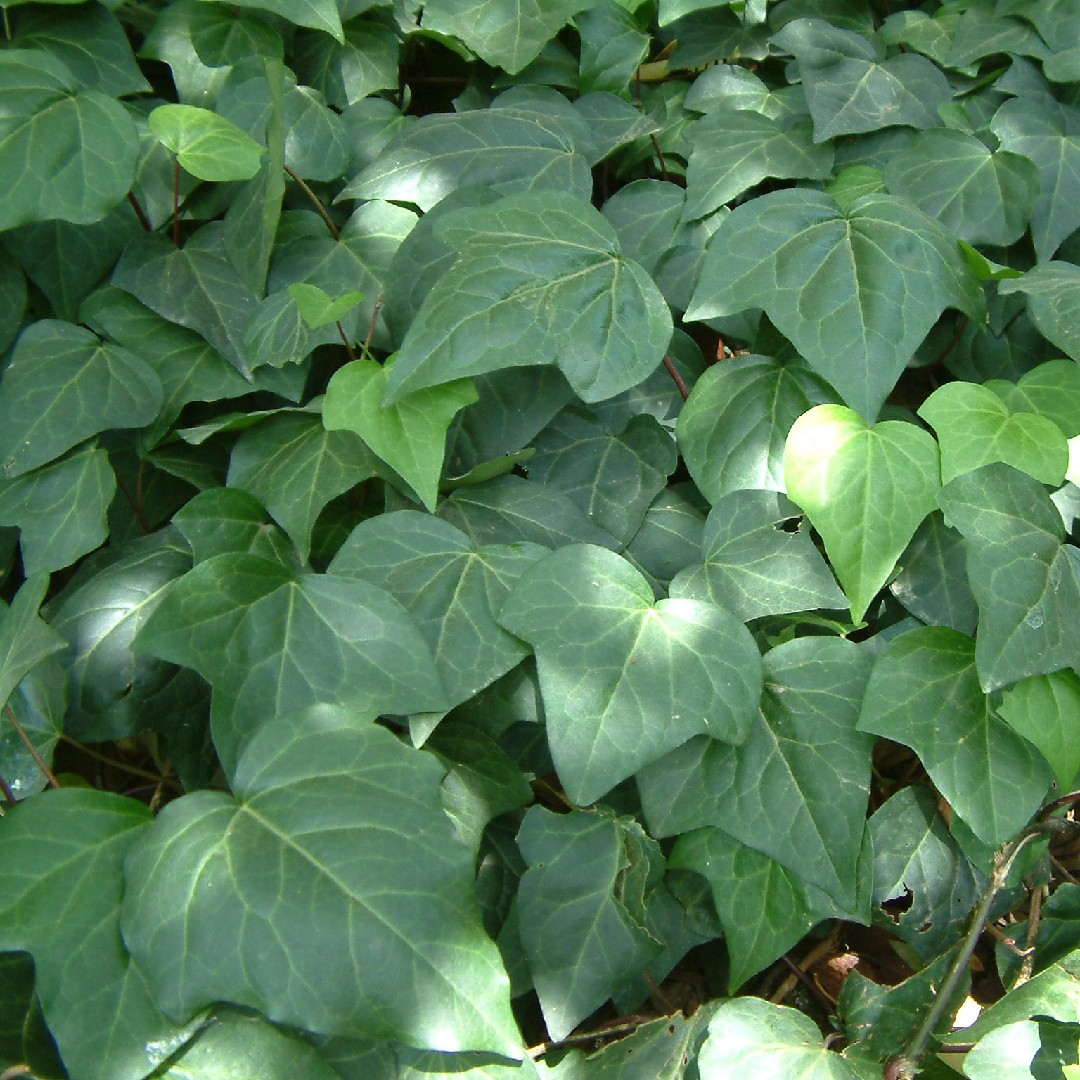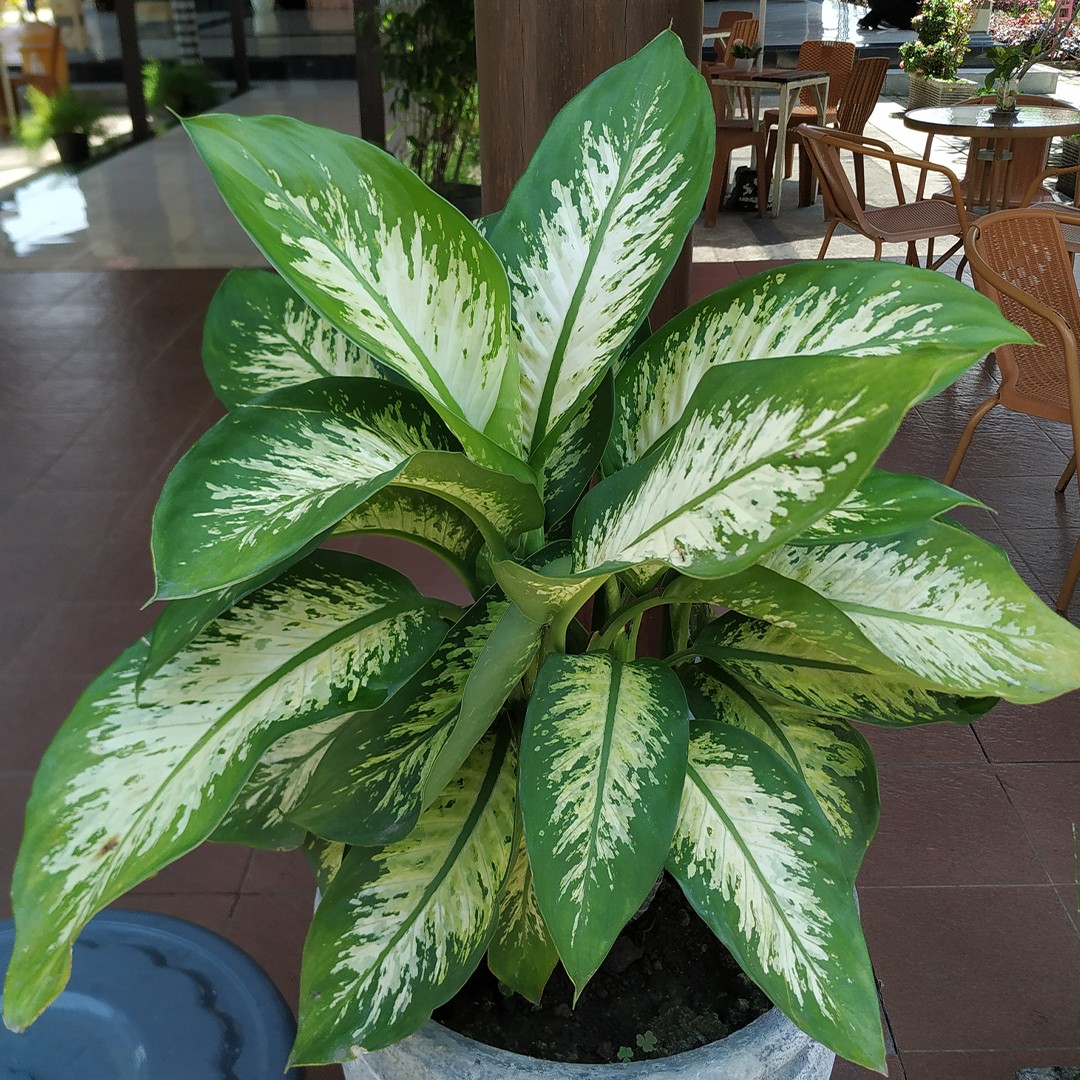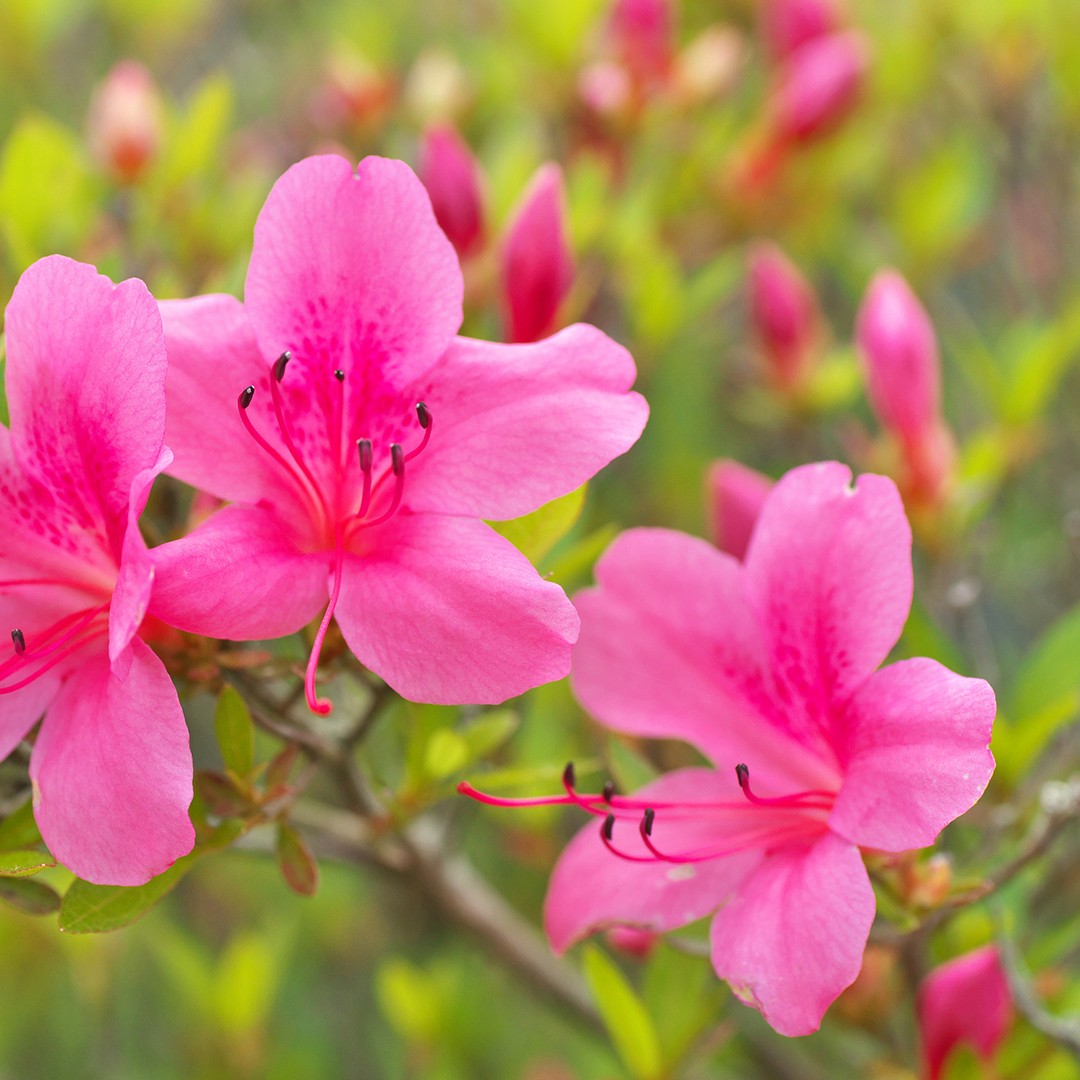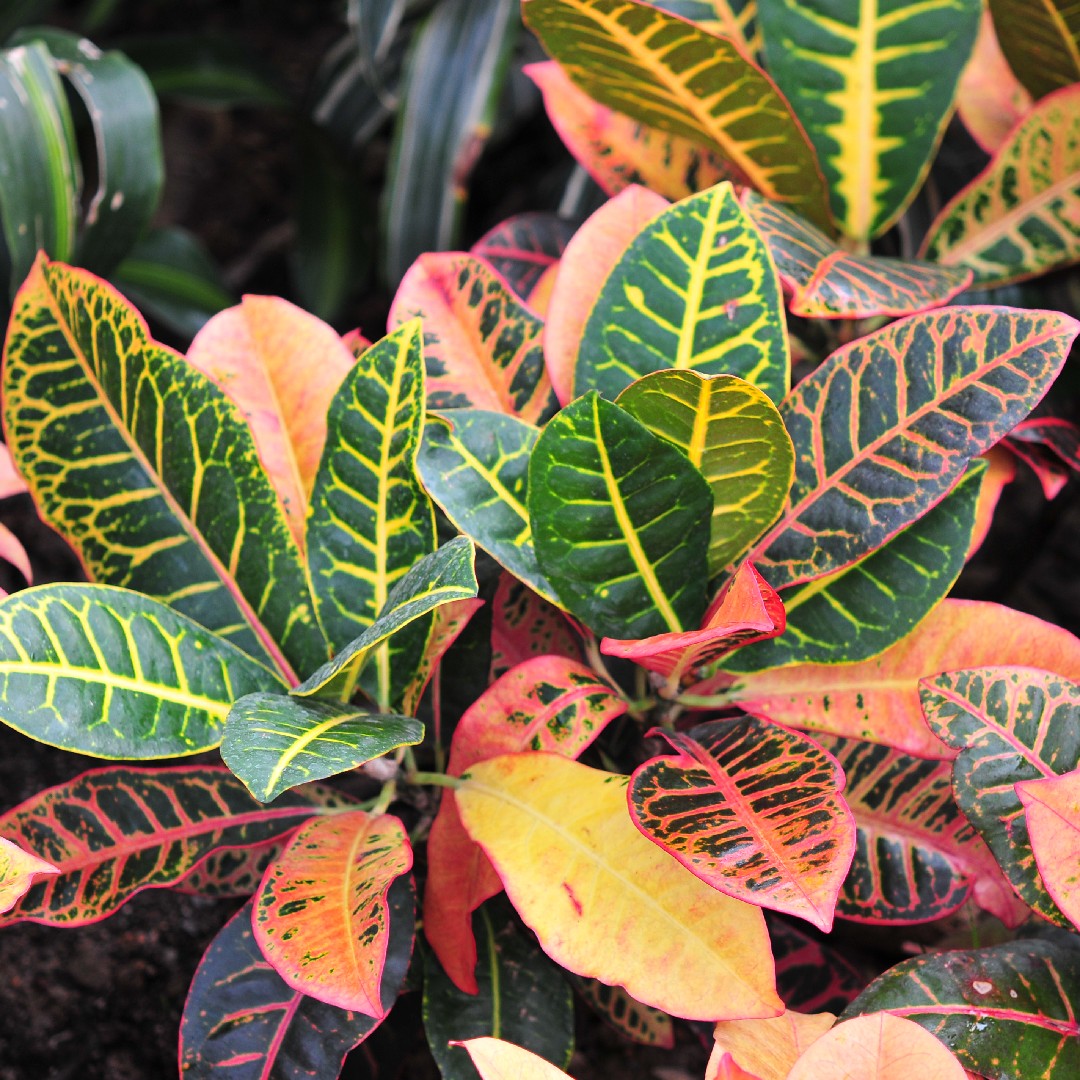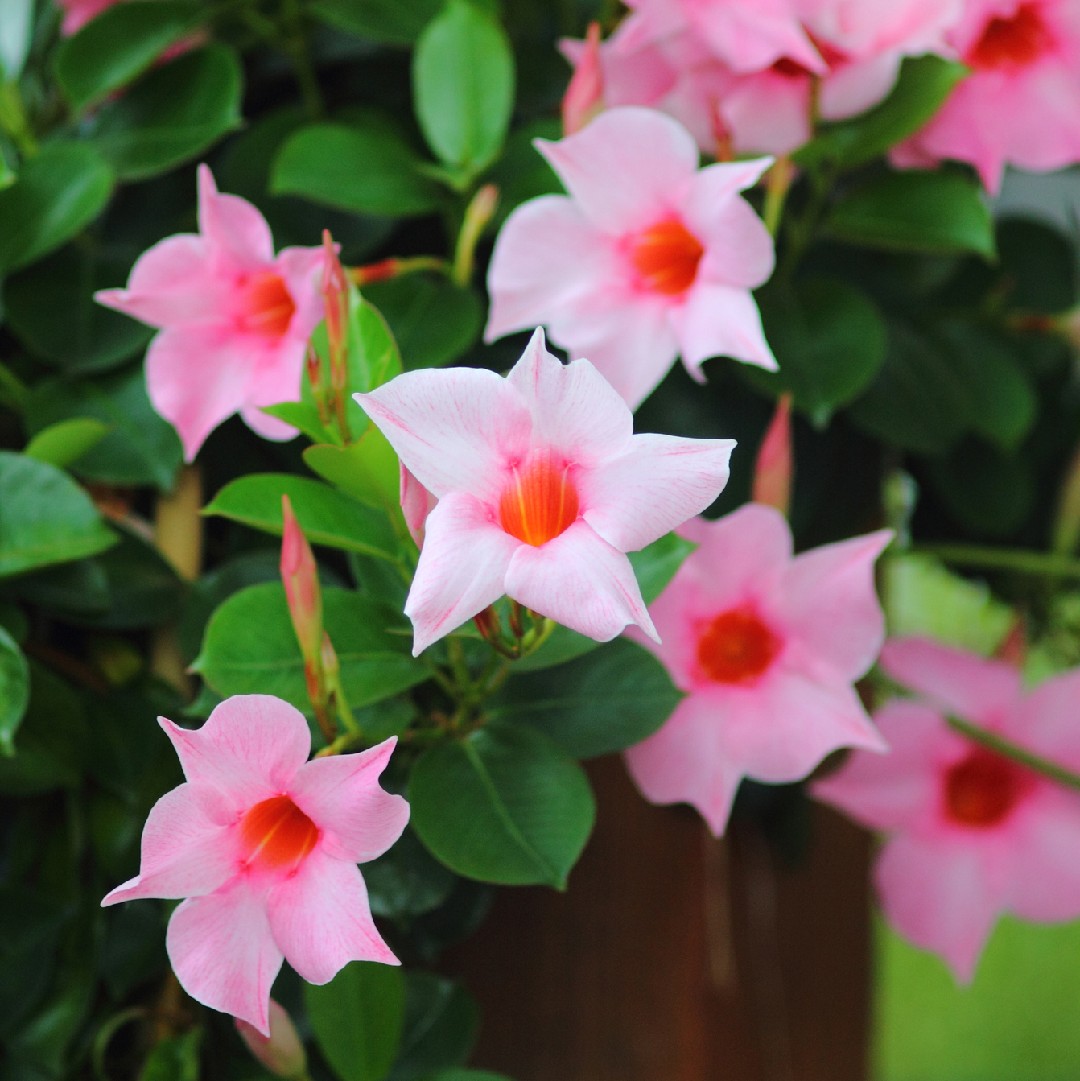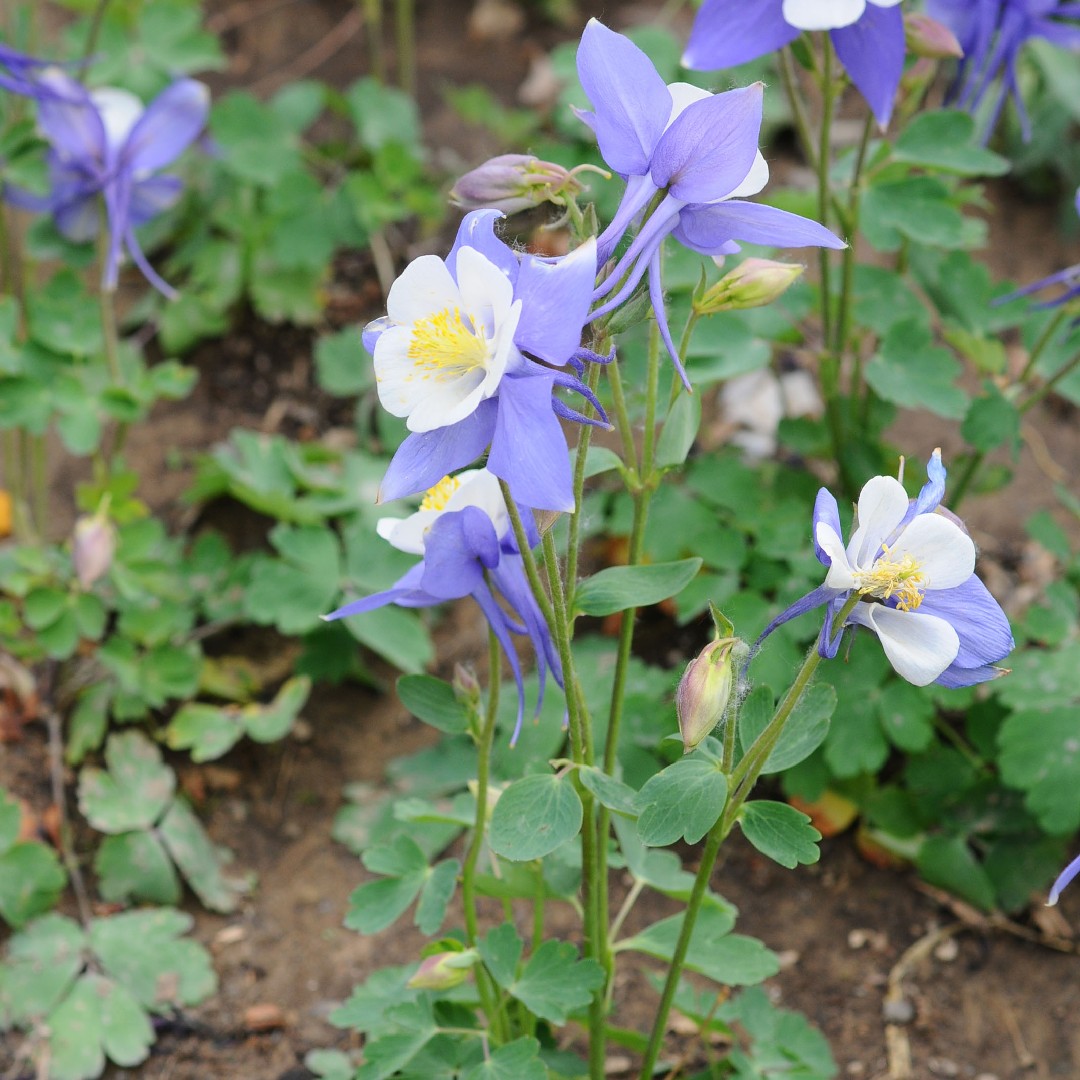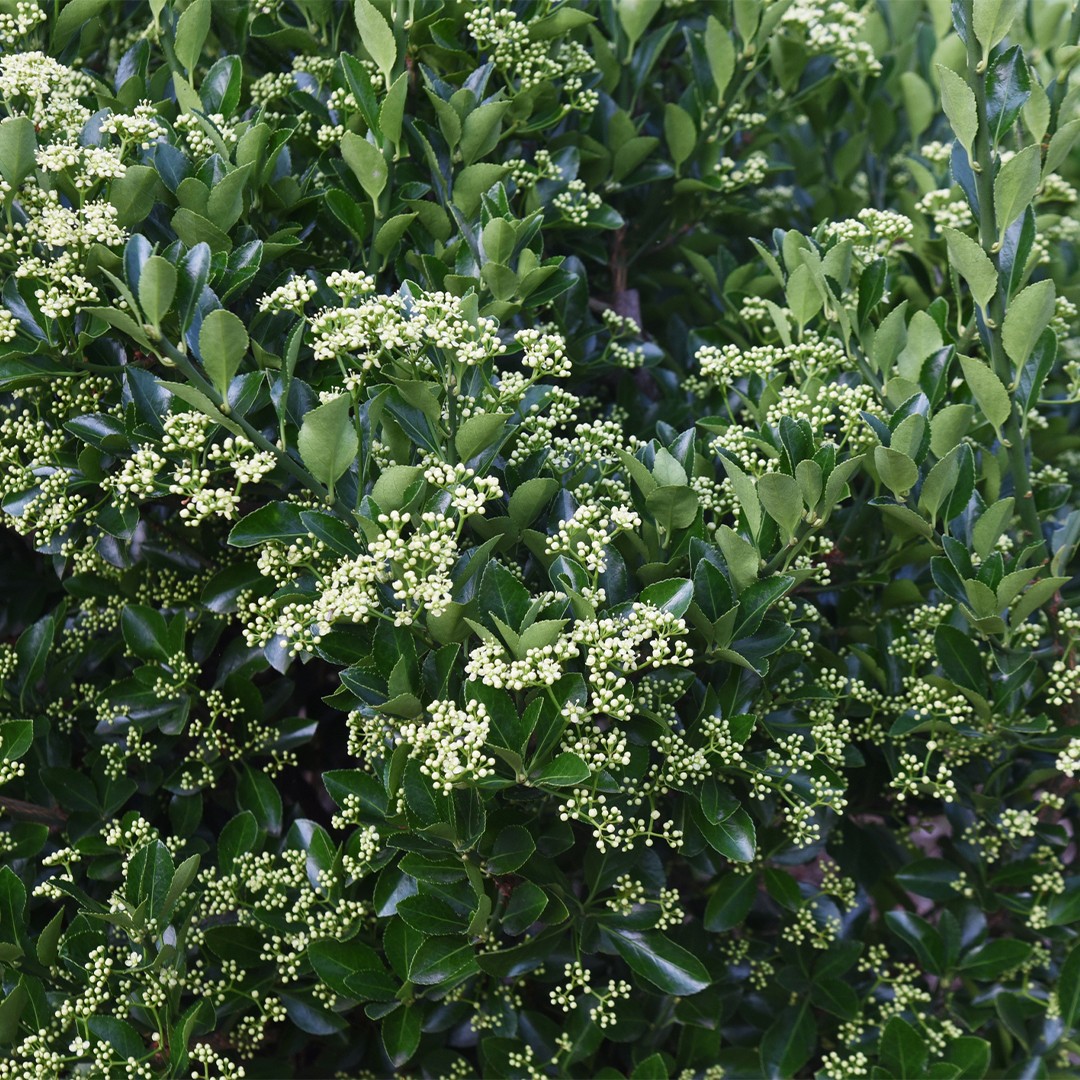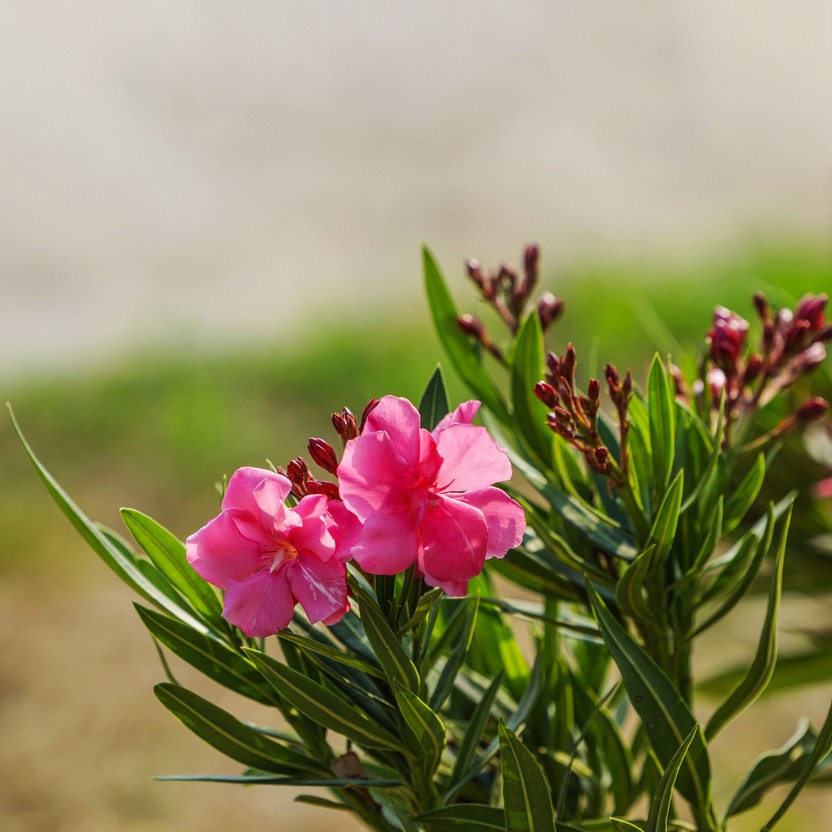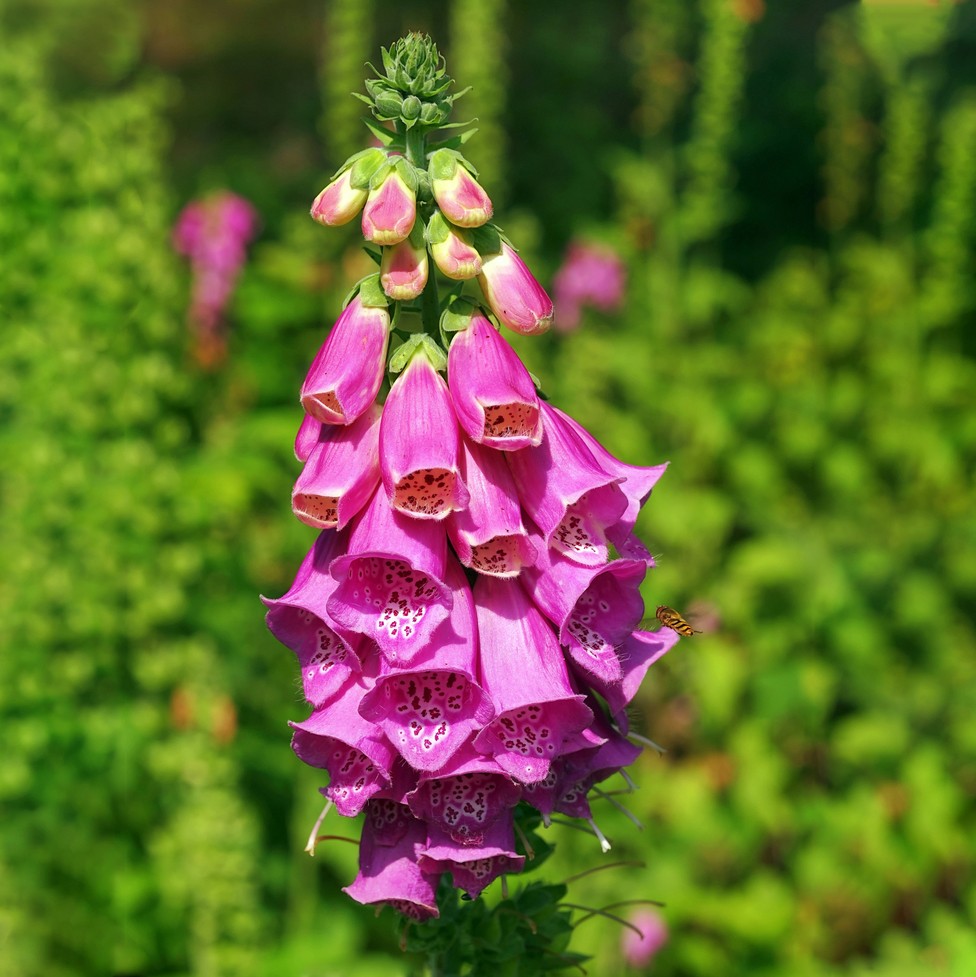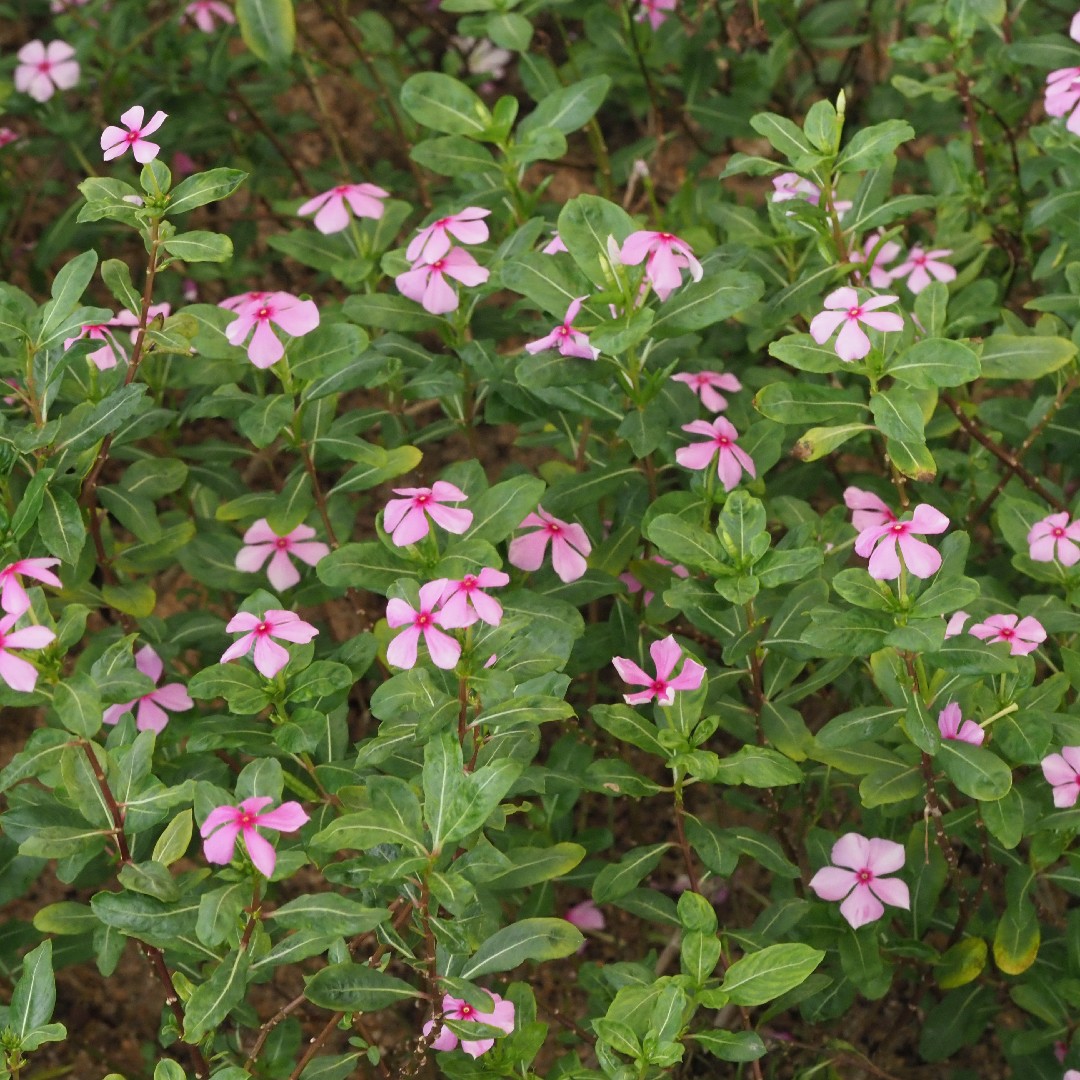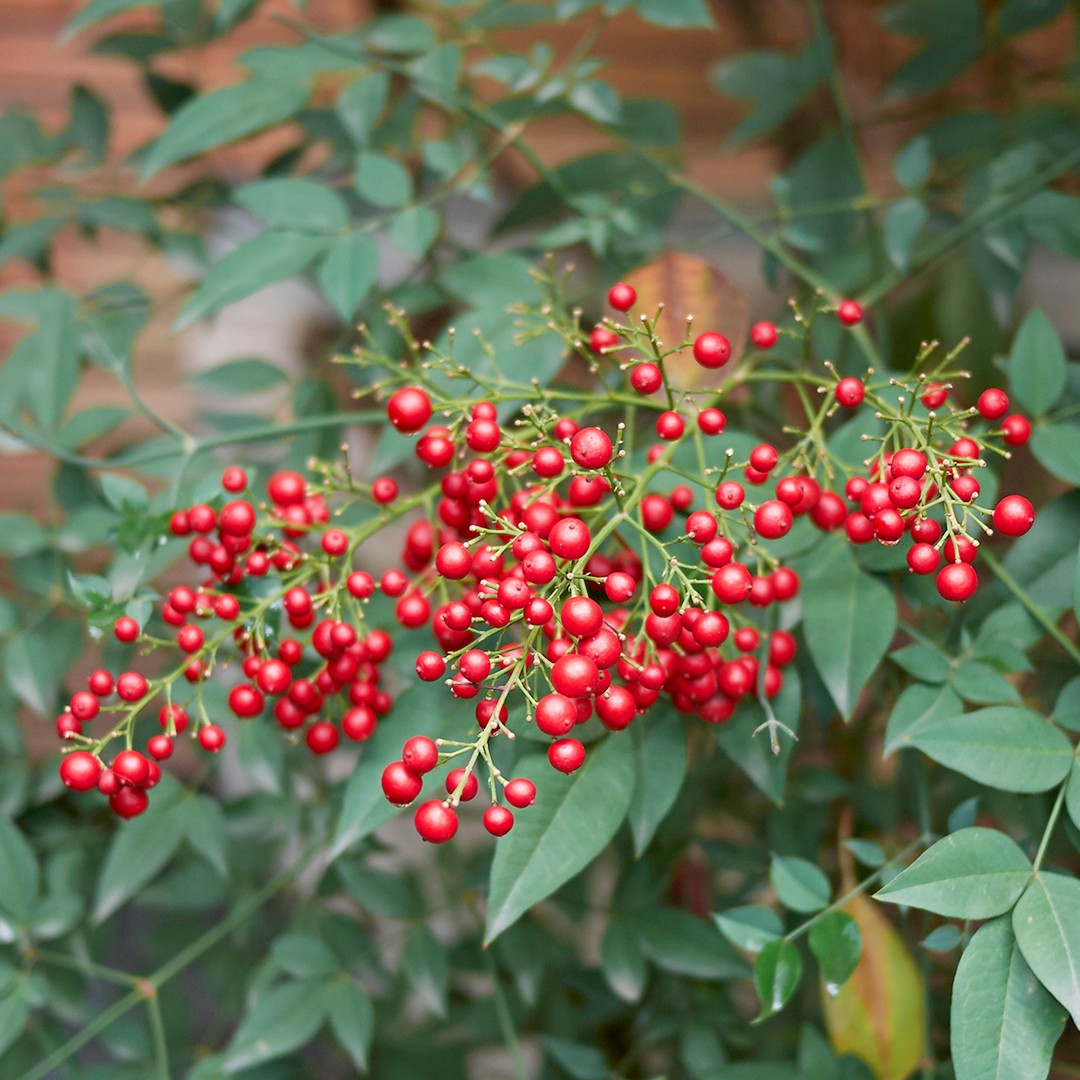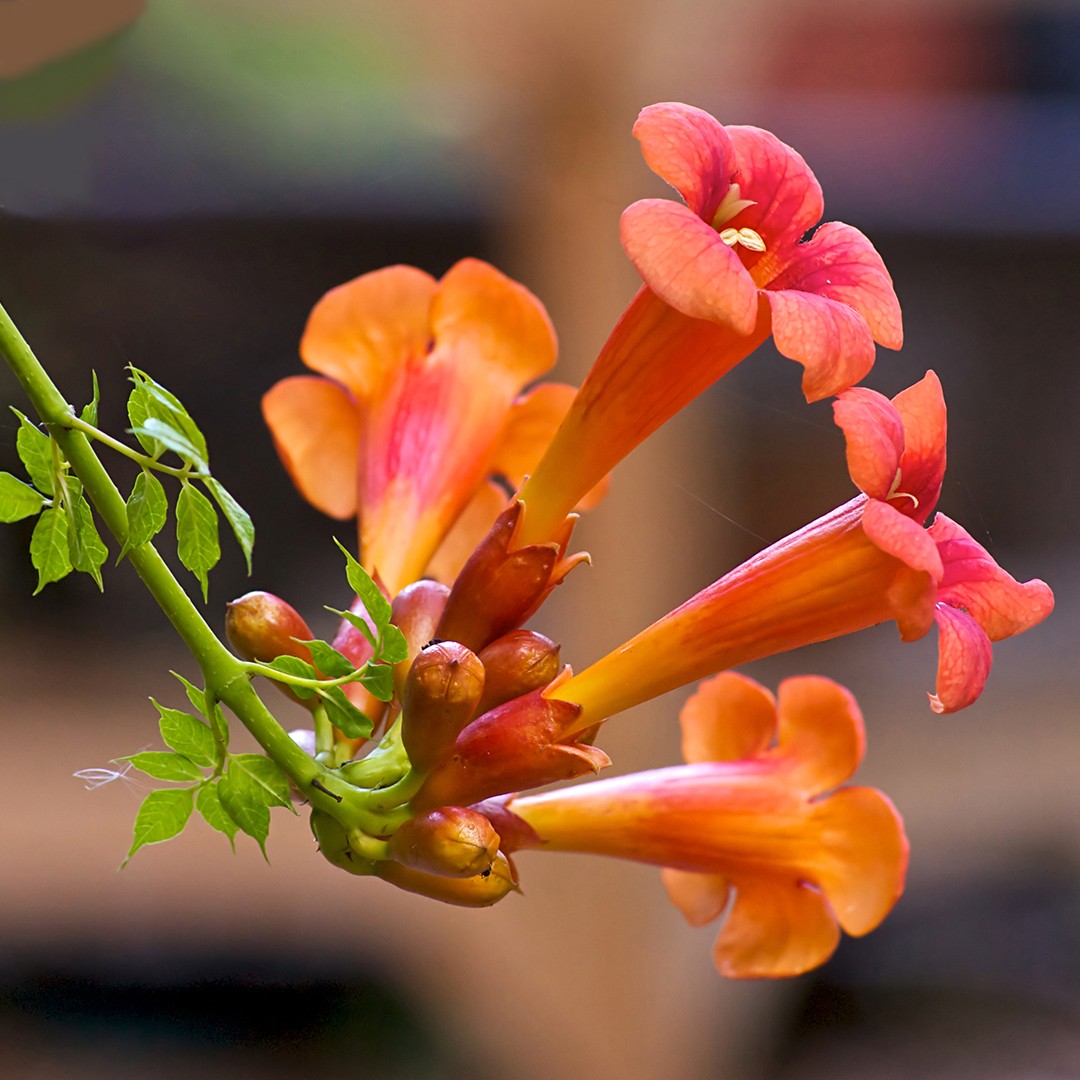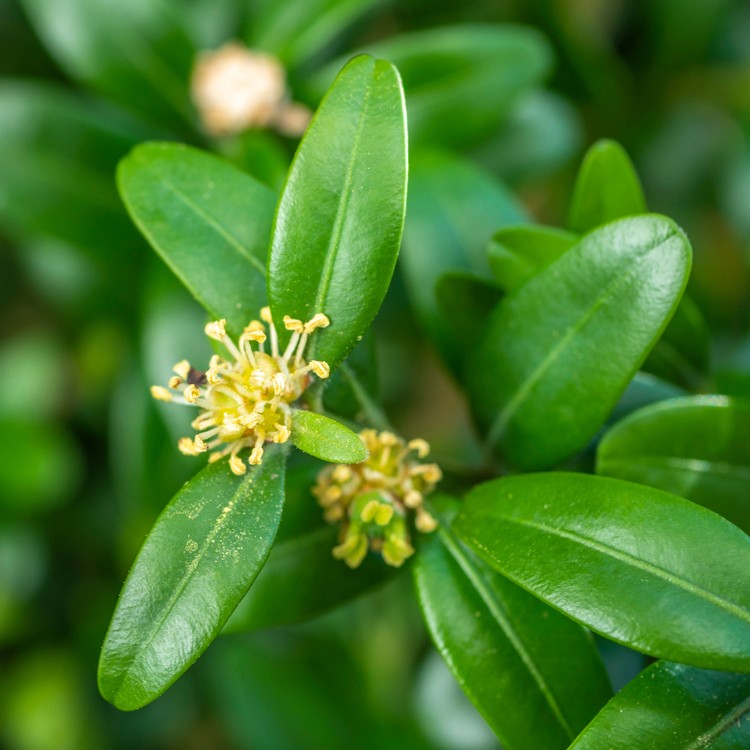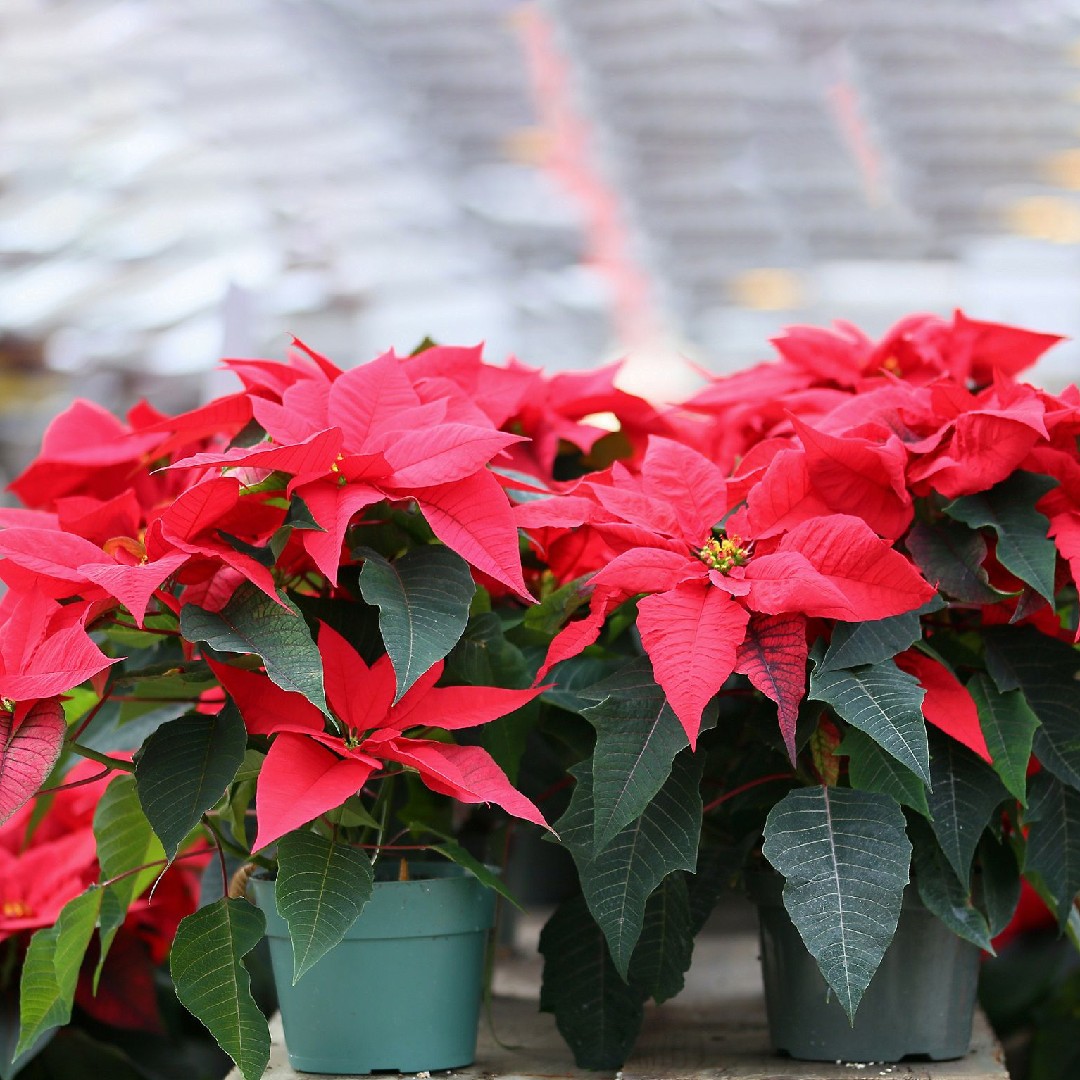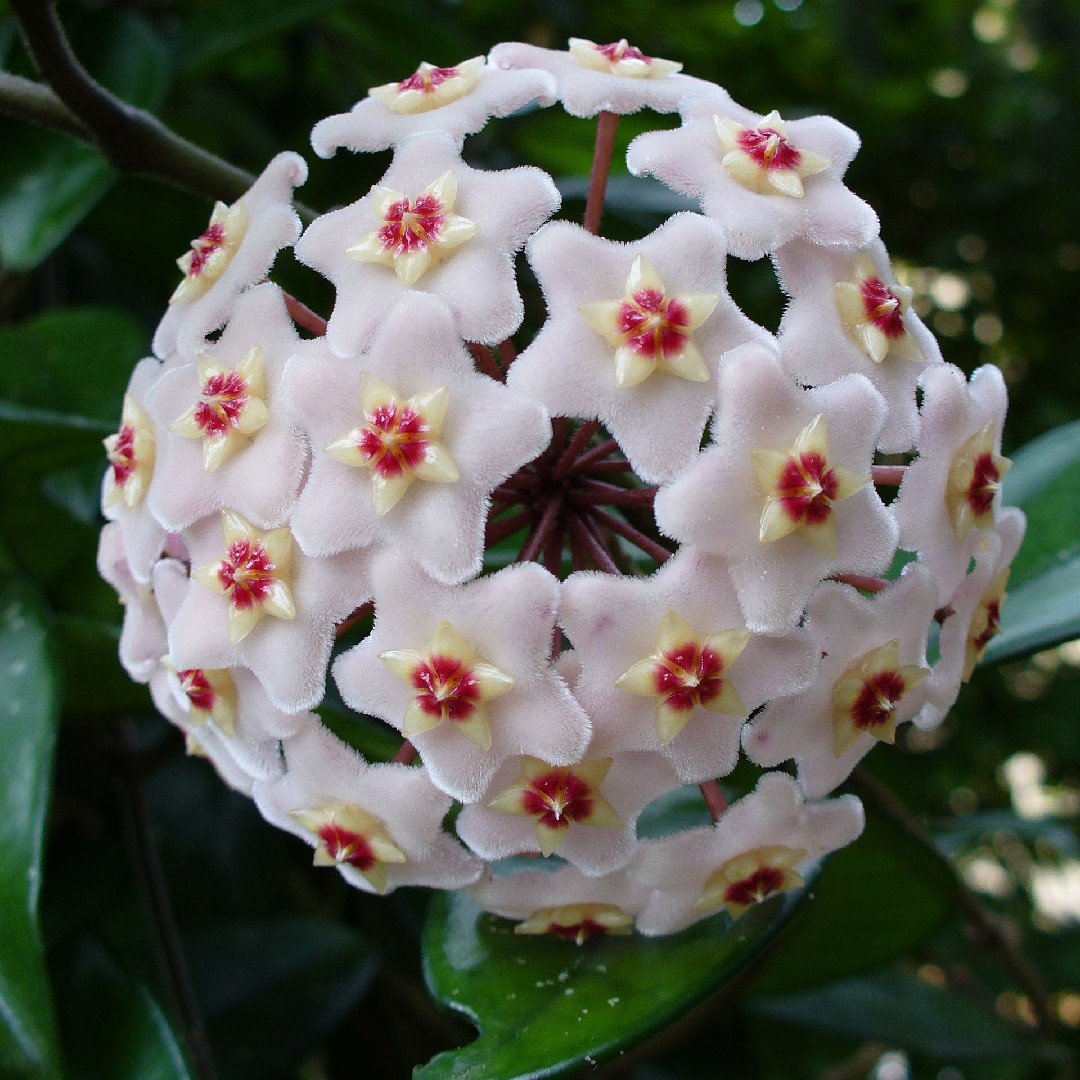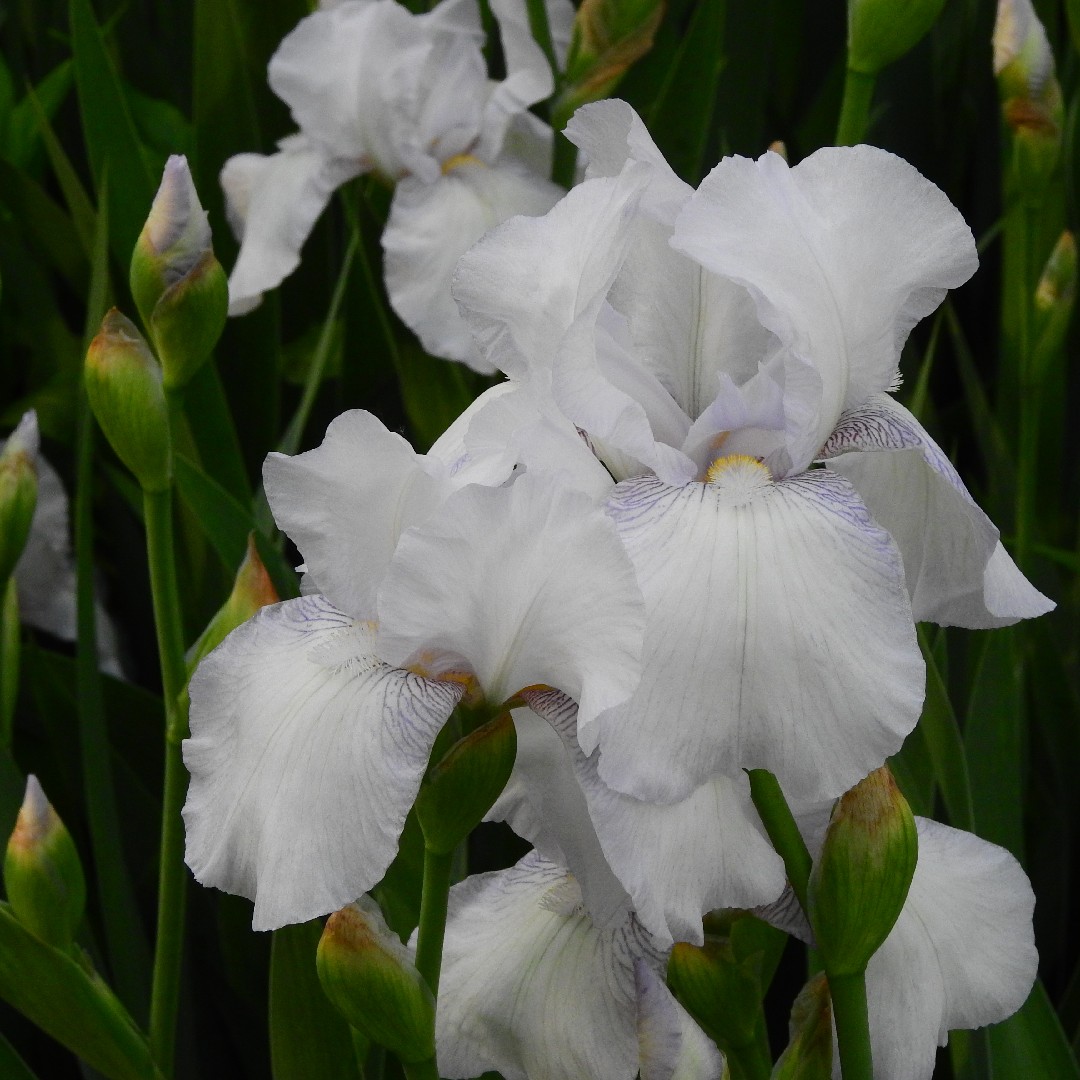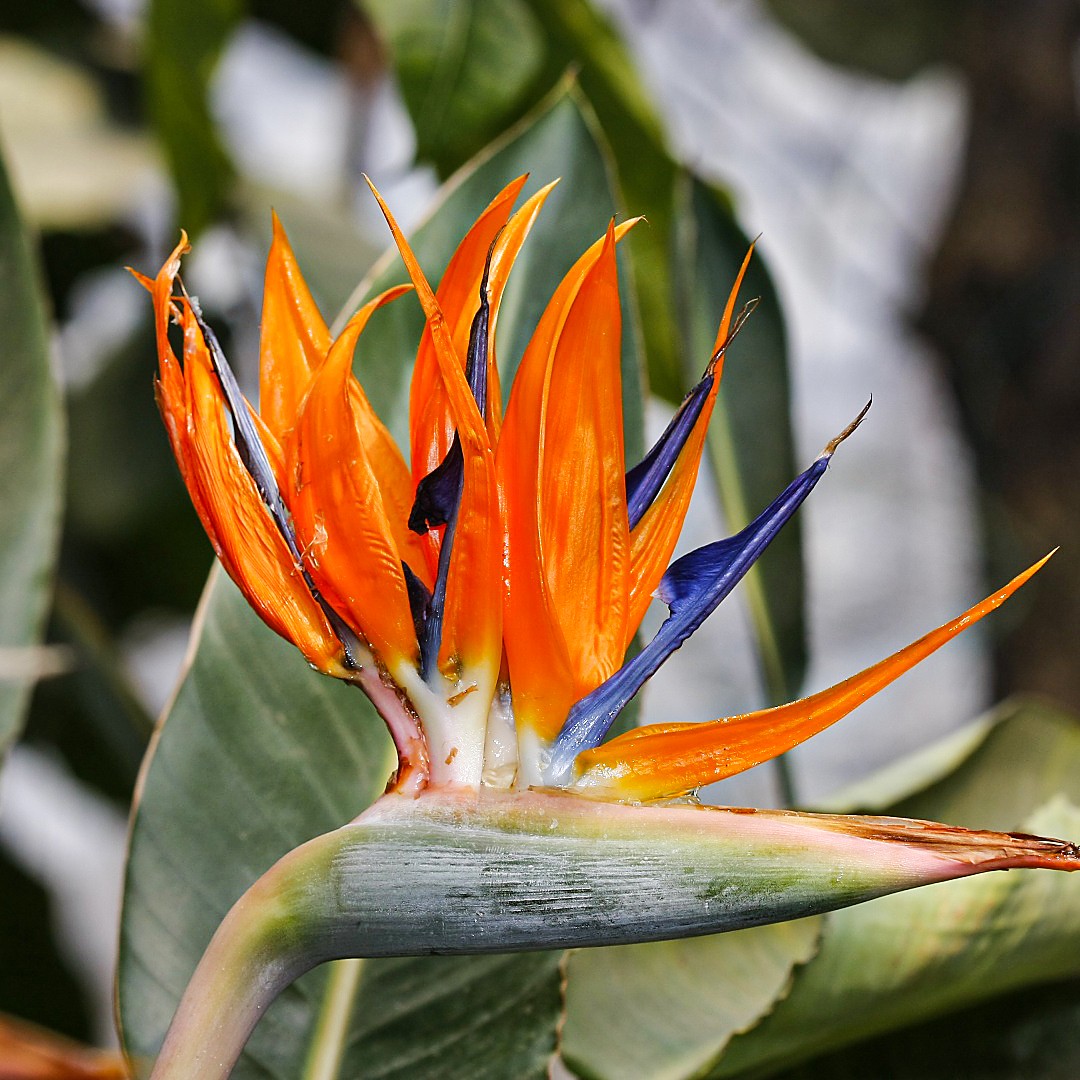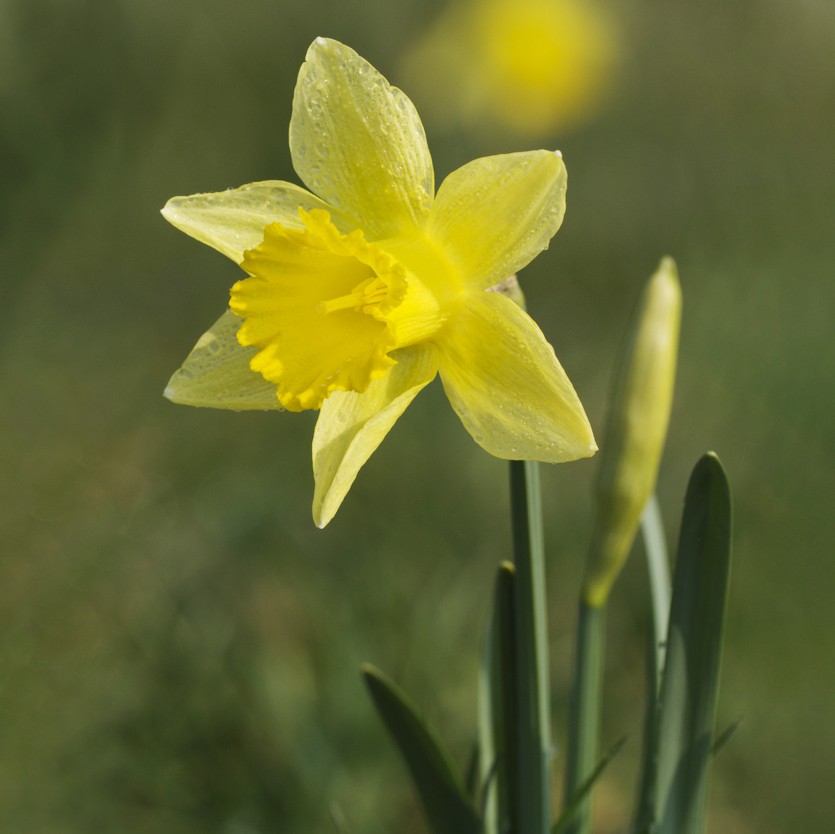What is the best way to water my Giant taro?
There are plenty of viable ways to supply your Giant taro with water. If you grow your plant in an indoor pot, for the Giant taros in small pots, you can bring your potted plant to your kitchen sink. Then, use the faucet to add water to the container. By holding the pot in your hands, you should easily notice when the water begins to run through the pot’s drainage holes, at which point you can stop watering. The cold temperature will hurt the plants' root system, so please don't do this during winter or in cold climates. Most of the time, watering via your faucet is permissible for the Giant taro. However, if the local tap water contains a high proportion of fluorine, chlorine or salts, you should consider using rainwater or lake water. Also, since the Giant taro can respond well to overhead watering and watering directly into the soil, you can use a watering can, hose, or just about any tool you’d like to water it.
![more]()
What should I do if I water my Giant taro too much or too little?
If you discover that you have underwatered your Giant taro, your first step towards remedying the situation is to give your plant some water. Water deeply until excess water runs from the container’s drainage hole, or if you grow outside, water until the soil has become entirely moist. If you find your Giant taro is receiving too much water, begin by reducing your watering schedule. You also want to address the soil and container your Giant taro grows in. If either the soil or the container makes it difficult for water to drain efficiently, your plant will likely become overwatered again. Resolve the issue by moving your plant to looser soils and/or a container with bigger drainage holes or a more porous material. Also check the location of the plant. If the plant is in places like a corner, then it is recommended to move it to a window or around a door to enhance ventilation. Making sure the plants are in a well-ventilated location can reduce the occurrence of overwatering to some extent.
![more]()
How often should I water my Giant taro?
The Giant taro is not a species that requires consistent soil moisture. Instead, it is better to allow this plant’s soil to become dry between waterings. If you are like the many gardeners who grow Giant taros in containers, you can judge whether or not it is time to add water by how dry the soil within the container is. For instance, if about top half of the soil in your container has become dry, it is time to add water. You can feel it by inserting your fingers or sticks into the soil or with soil moisture meter. For those who grow the Giant taro outdoors, you can plan to do your watering about once every other week, provided it has not rained recently.
![more]()
How much water does my Giant taro need?
After waiting for the first several layers of soil surrounding your Giant taro’s root to become dry(top half of the soil), it is time to add enough water to make them moist again. The amount of water it takes to achieve that goal depends on if you use a container, how large that container is, and how large your plant itself is. For a small Giant taro growing in a small to a medium-sized container, one to two cups may be enough to dampen the soil sufficiently. As you would expect, the volume of water you supply should increase for a larger plant. The best way to make sure your plant has received enough water is to stick your finger or a trowel into the soil and feel whether it is entirely moist. Alternatively, you can water until you see excess water draining from the holes at the bottom of your container.
![more]()
How can I tell if i'm watering my Giant taro enough?
Overwatering and underwatering are both bad for the health of your Giant taro. These two issues also manifest themselves in subtly different ways when they occur. Giant taro that receives too little water may begin to develop yellow leaves. Underwatering may also cause the leaf margins to become brown and brittle. By contrast, Giant taro that gets overwatered will often show yellow and brown marks on its leaves at the same time. Overwatering can also lead to diseases like root rot, some of which may also be visible on your plant. However, if you know the signs of overwatering and underwatering, you stand a good chance of correcting both issues.
![more]()
How should I water my Giant taro through the seasons?
During spring and fall, your watering schedule for the Giant taro will remain relatively the same, which will involve watering this plant about once every week. During summer, you may find that the hot weather causes your plant to need more water than usual, especially if it grows where there is a considerable amount of daily light exposure. In the winter, if it's hard to find some warm places for you plant, your Giant taro will enter a dormant growth phase, in which it will need far less water than usual. At this time, you may get by without watering your plant at all. If you do choose to water during winter, you should not do so more often than once every two to three weeks.
![more]()
How should I water my Giant taro at different growth stages?
After planting a new, young Giant taro or after transplanting an older Giant taro, you will probably need to give this plant more water than usual. Young plants often need consistent soil moisture during the early stages of their growth to help them adapt to their new growing locations. Transplants also need more water for a brief time to overcome transplant shock. In either case, you may need to water multiple times per week until your plant has exhibited continuous healthy growth. In most situations, your water should be moderate and should never be significant enough to cause overwatering.
![more]()
What's the difference between watering Giant taro indoors and outdoors?
There are a few reasons why you may need to water an indoor Giant taro more often than one that grows in the ground outdoors. First, indoor growing settings tend to be drier than outdoor ones, often due to the effect of air conditioning units. While thw size of the pot and the soil determines the warer accumulating ability. Additionally, when your plant grows indoors, it will rely on you entirely for its water By contrast, Giant taro that grows outside can receive water from rain. If you are in an area with high rainfall, you may not have to give it extra watering. When there is not enough rain, you should water additionally to ensure that the soil does not dry out completely.
![more]()
How can I prune my Giant taro?
Pruning your Giant taro is a fairly simple process. First, you will need a reliable set of hand pruners or hedge trimmers. You may use a clean pair of sharp scissors if you don’t have pruners or garden shears on hand. It’s important to always clean your gardening tools before and after using them to prevent the possibility of spreading disease or infection to other plants. To prune your Giant taro simply allow your plant to go dormant over the Winter. Some time between late winter and early spring – or when new growth starts to appear – take your clean pruners or trimmers and cut away any dying, damaged, yellow or declining foliage. Repeat this process until you reach the base of the plant or until there are no dead pieces left to cut. When pruning, be careful not to damage the new growth that may be emerging near the base of your plant. These parts cannot be restored and pruning can increase the ventilation of the plants and facilitate their growth. Any pruning that is done to this plant should be cut straight across the blades or stems. No angled cuts are required. Diseased leaf blade foliage can be removed as it appears. This could be done anytime when your Giant taro is growing.
![more]()
What should I do after pruning my Giant taro?
Once you’ve pruned your plant, you should dispose of the stems and leaves either by composting the healthy ones or throwing out the diseased parts. You can also fertilize just before or after pruning, which gives Giant taro a little vitamin boost that can provide it the nutrients needed to better protect itself from any nearby pathogens or diseases. Do not water the Giant taro immediately after pruning as this can lead to fungal infestation of the plants through the wounds. You don’t need much after care when you’re done pruning. It might benefit from light watering and some liquid plant food to encourage new growth.
![more]()
How can I prune my Giant taro during different seasons?
Early spring and late winter are the best times to prune your Giant taro on a large scale. If you want to control the size of your Giant taro, you can prune them as you wish, but be careful not to prune more than a third of the size of the plant. Yellow and diseased leaves may appear during the summer months when the Giant taro is growing vigorously and these types of leaves need to be pruned back immediately. These parts of the Giant taro cannot be restored and pruning increases the ventilation of the plant and facilitates its growth.
![more]()
When should I prune my Giant taro through different stages of growth?
Strategic pruning is usually done at different times of the year or during certain stages of growth depending on the plant. However, knowing when to prune your Giant taro depends on where you live and how established your plant is. For example, if your Giant taro is a new resident, it’s a good idea to wait until the plant starts to grow back before you start pruning. On the other hand, if your plant is already established, you will want to prune the dry or dead parts in plant before new leafy growth appears in early spring or late winter. This is the time of year when plants are dormant and pruning causes the least damage to them. This is also the best time of year to do more extensive pruning. It’s important to note that if Giant taro is pruned too late in the season, it can leave new growth at risk for damage or disease. However, if your Giant taro is indoors this is not a problem and you can prune at any time. Since this can affect the long-term health and appearance of your plant, it’s important to keep this in mind when deciding when and how to prune. As your Giant taro grows larger over time, you can trim it as needed after annual pruning. Dead, damaged, or diseased leaf blade foliage can be removed as it appears. This could be done anytime when your Giant taro is growing.
![more]()
What type of sunlight does Giant taro need?
Giant taro typically needs full, indirect sunlight in order to thrive indoors. This means that the plant should be exposed to bright sunlight that doesn’t hit it directly from a window or another light source, like a grow light. You can easily protect it from direct sunlight by placing a sheer curtain between your Giant taro and the window, or by placing it behind a part of the window with a dark screen.
![more]()
How can I avoid damaging new Giant taro with sunlight?
If this is your first time bringing your Giant taro home, then it might be a good idea to try to ease it into the sunlight it needs, rather than place it in bright, indirect light right away. Over the course of two weeks or so, you can slowly move your plant into the sunlight to avoid shock or burning of the leaves from sudden intense light exposure. By easing it into the light, your Giant taro is much more likely to adapt to your home environment well.
![more]()
How can I tell if Giant taro is getting too much light?
Giant taro is one that can easily sunburn with too much sunlight. In the wild, these plants only receive mild, dappled light, filtered down from tree canopies. While they need more light than that to grow in our homes, too much can certainly cause issues. If your Giant taro is getting too much light, you’ll notice that the foliage begins to look bleached or washed out, the tips of leaves may turn yellow or brown and crispy, and it may even grow too quickly to support itself.
![more]()
What should I do if my Giant taro gets light damage?
Sunburn for plants is much less severe than sunburn for people. While it may look unsightly, crispy, burnt leaves can be removed if they’re too far damaged to recover, or over half of the leaf is damaged. However, you can also try trimming back the leaves just to remove any sunburn damage in an effort to save them, if there’s not too much discoloration. Move your Giant taro away from its light source to avoid future light damage.
![more]()
Does Giant taro need different light during different growth stages?
While some plants may be ready to face the sweltering sun straight out of the ground, Giant taro needs some time to build itself up enough to tolerate bright light. Propagated cuttings should receive only moderate indirect light, while new leaves during the growing season should be shielded a bit as well. The tender new leaves are more prone to sunburn than any other part of the plant.
![more]()
How can I tell if Giant taro isn’t getting enough light?
Fortunately, plants can communicate in their own language to convey whether they have adequate sunlight or not. Like most plants, your Giant taro will tell you if it isn’t getting enough sunlight. The most visible sign is when your plant becomes particularly dark, or there is no new growth on the plant from one season to the next. You’ll also notice that leaves that do grow in may remain smaller than others, since there isn’t enough light to photosynthesize to support large new leaves.
![more]()
How much sunlight should Giant taro get each day?
Depending on how bright the sunlight is that your Giant taro gets, the number of hours in a day may vary. If you have your plant in bright, indirect light, then there’s no need to try to restrict or increase the amount of time your plant gets this light each day. However, if light is less bright or further away from your Giant taro, then you can try to aim for at least eight hours of full light per day.
![more]()
What is the optimal temperature for Giant taro?
For this tropical plant to thrive, you’ll want to keep them between 75℉ and 90℉ (25-32℃). Each species can handle temperatures outside of this range, but keeping it within several degrees of these limits will ensure they grow to their maximum potential. As for its extreme temperature limits, any environment below 50℉ (10℃) or above 95℉ (35℃) will begin to hinder its growth and cause various aberrations to its leaves and stems. This is especially true with low temperatures; even a light frost can cause your tropical plants to perish. Cellular death can begin to happen at a rapid pace, with some species dying in as little as 12 to 24 hours.
![more]()
Does Giant taro require different temperatures for different growing phases?
While Giant taro doesn’t require any changes in temperature to enter different growing phases, it is important to stay consistent. Wild temperature fluctuations can slow down its growth regardless of its current phase, so it's always better to keep them in a controlled environment. That optimal temperature range of 75℉ and 90℉ (25-32℃) is vital to maintain, especially staying above the lower limit. Going above 90℉(32℃) isn’t ideal, but as tropical plant it won’t suffer too much. On the other hand, going below 50℉ (10℃) (and especially 40℉/5℃) will begin to directly damage this heat-loving plant species.
![more]()
Does Giant taro need different temperatures for different seasons?
Giant taro does not need different temperatures for different growing seasons. The most important step in seasonal care is to keep the environment within the optimal temperature range. That's why it's always best to keep this plant indoors. That way, you can control the temperature no matter what the climate is like outside. Light is also important for tropical species, with all of these plants preferring a partial side level of sun exposure. This means any light they receive needs to be dappled or filtered, with bright but indirect light being the best option when growing your plants indoors. Too much direct sunlight can negatively affect your plant’s leaves, reducing its growth potential.
![more]()
What are the temperature guidelines to keep your Giant taro healthy?
Tip #1: Don’t Leave Your Plant Near Windows in Colder Months If you want to make sure your plant isn’t exposed to colder temperatures, you may want to keep them away from windows. In colder months like late fall and winter, even the smallest draft can leak cold air into your home through cracks in your windows. While this air usually dissipates and warms up as it travels throughout your home, any plants placed in close proximity to the window will be affected. Move your tropical plants into an area where they will still get bright but indirect light, while making sure they won’t be affected by potential drafts. Tip #2: If You Find Dry Patches, Your Plant May Be Getting Too Much Sunlight or Heat You may notice the leaves become white or even scorched on a sunny day. These discolorations and unusual markings usually indicate that a plant is getting too much heat or sunlight, and it may be dehydrated. Excess light and heat will dry out the soil, stopping plants from getting the moisture they need to support their cellular structure. It also slows down or stops the process of photosynthesis, further hindering growth. If ignored for too long, these dry spots can spread and eventually result in the death of your plants. Tip #3: Avoid Frost at All Costs Colder temperatures and frost can damage your plants by causing ice crystals or disrupt normal physiological activity. This makes it nearly impossible for water to move freely throughout plant tissue, creating a deficit of moisture in their stems and leaves. You can tell a plant has been damaged by frost if it begins to suffer from hydrosis (it will appear as though it's soaked with water.) If the problem persists, your plants may begin shriveling and turning a dark brown or black hue. After that, the plant will almost certainly die.
![more]()
What is the best way to maintain the right temperature for my Giant taro?
The best way to maintain the right temperature range for Giant taro is by keeping an eye on both the climate and humidity. You’ll want to try to keep each species in a room where you have access to climate control, keeping the heat in the temperature range best mimics its natural habitat. The humidity levels will also have a direct effect on temperature, so it's important to monitor these as well. You can artificially raise the humidity of your growing space by using a humidifier or lightly misting the leaves with water. If you intend to grow this species outside, you may find it difficult to maintain the right balance of temperature and humidity. If temperatures begin to drop or the air becomes too dry, your best option is to find room within your home and move your plant inside. An indoor growing space will allow you to control the climate more closely, helping your plant reach its full potential.
![more]()
Why do I need to fertilize my Giant taro?
All plants rely on soil nutrients to facilitate their growth, and the Giant taro is no exception. However, it is not always a guarantee that the soil in which your plants grow will have all of the nutrients required. Fertilization and soil amendments help ensure that the plants in your garden not only have the basic nutrients they need but also that they get the nutrients that are specifically necessary to them. Giant taro needs fertilizer to ensure that its roots and stems continue to develop in a healthy way throughout the growing season. Fertilization will also help a Giant taro a set of leaves that looks fantastic, which is especially important for this plant since its foliage is its main point of ornamental appeal.
![more]()
When is the best time to fertilize my Giant taro?
A Giant taro will need the greatest amount of fertilizer during the seasons in which it is actively growing. This active growth phase typically spans most of the months that make up spring, summer, and early fall. Once winter ends, you should plan to feed your Giant taro about once every two to four weeks. Continue feeding at this rate until the fall months arrive. Once fall arrives, you can reduce your fertilization rate, reducing the amount of fertilizer you give gradually until you cease feedings entirely in anticipation of winter, when the Giant taro will have far less active growth.
![more]()
When should I avoid fertilizing my Giant taro?
Throughout most of the year, including spring, summer, and most of the fall, you should continue feeding your Giant taro regularly. The only exception to this is if you notice that your Giant taro has received too much fertilizer or if you have managed to fertilize your Giant taro incorrectly, causing fertilizer burn or some other issue that you'll need to remedy before returning to a regular feeding schedule. The only time of year when you should not fertilize a Giant taro is during winter. If you grow this plant indoors in an area where the winters are cold, it will enter a dormant phase during the winter. Feeding this plant during its dormant phase is not only unnecessary and unhelpful to this plant's growth, but it is also very likely to cause fertilizer burn.
![more]()
What type of fertilizer does my Giant taro need?
The fertilizer for a Giant taro has a specific blend of nutrients, each of which is present in relatively low amounts. An ideal fertilizer will have an N-P-K ratio of 3-1-2. However, a general-purpose fertilizer that has an even blend of nutrients can work well in some cases. Still, even when using a balanced fertilizer, the ratio number representing the volume of each nutrient should be at 10 or lower. The fertilizer you use can be either granular or liquid based. If you choose to use a liquid-based fertilizer, it is often best to dilute the strength by half. While there is not much downside to granular fertilizer, it is often most sensible to use liquid fertilizer, especially if you feed your Giant taro while you supply water.
![more]()
How do I fertilize my Giant taro?
The fertilizer that you purchase for your Giant taro will likely come with application instructions that you should follow in most cases. However, for a Giant taro, you should always fertilize just before or while you are watering the soil, as this will prevent the fertilizer from burning the plant's roots. If you use a slow-release granular fertilizer, you should sprinkle it on the soil and then provide water immediately after. If you use a liquid-based fertilizer, you should dilute it with water, apply it to the soil, then supply a bit more water. Diluting your fertilizer by at least half is especially important in spring and fall when the plant's growth is ramping up and decelerating, respectively.
![more]()
What happens if I fertilize my Giant taro too much?
Since it is advisable to fertilize your Giant taro every few weeks throughout the growing season, overfertilization is not often an issue. However, it remains possible for this to occur. If you overfertilize your Giant taro, you may notice accumulations of excess fertilizer on the soil’s surface and foliage discoloration. Fertilizer burn is the most common issue you should worry about when feeding a Giant taro. This issue occurs when you overfertilize, fail to dilute your fertilizer, or when don’t water during and after fertilization. In any of those cases, the fertilizer can draw moisture out of your plant’s roots, causing it to dry out. Often, fertilizer burn will manifest with browning and yellowing of this plant’s leaves.
![more]()


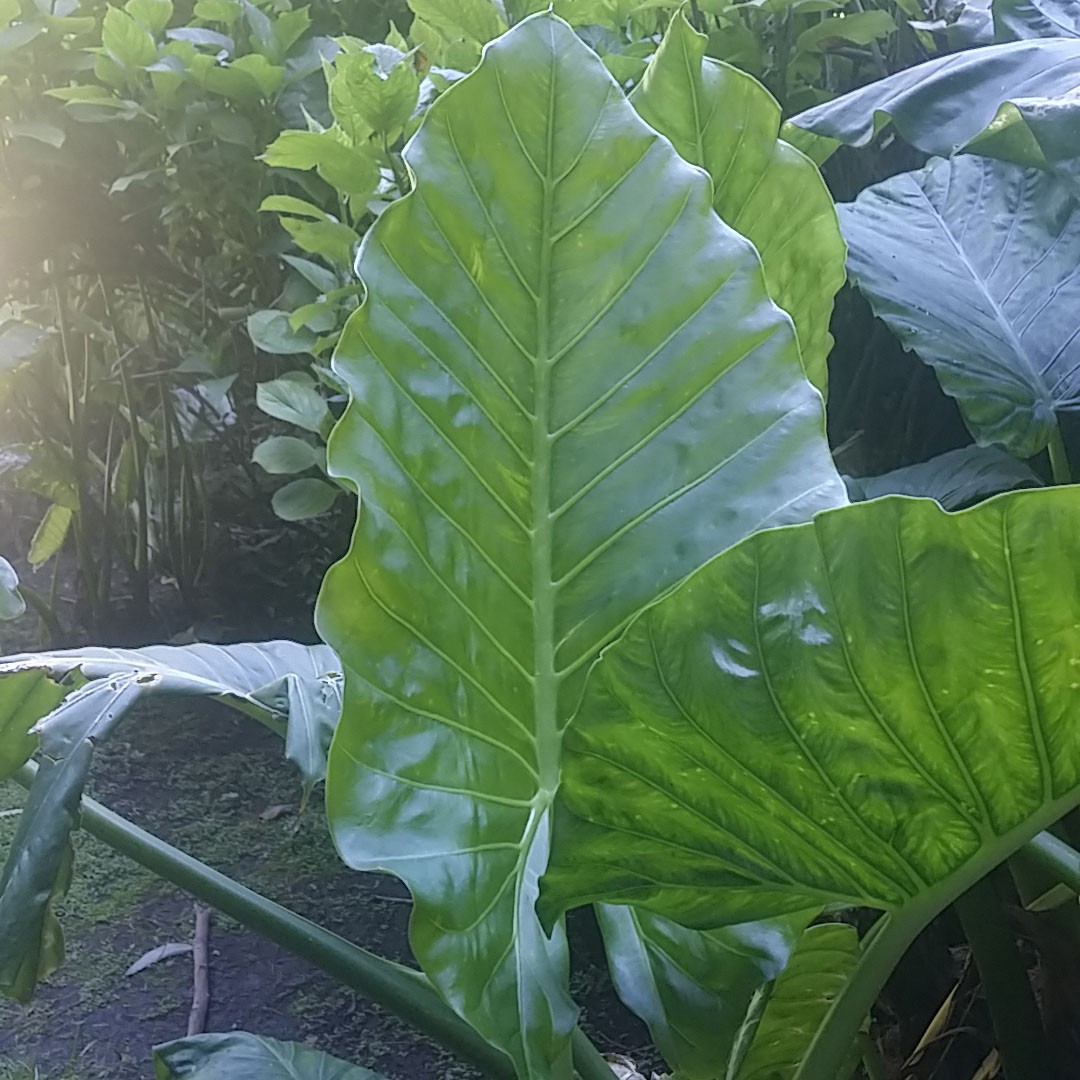




























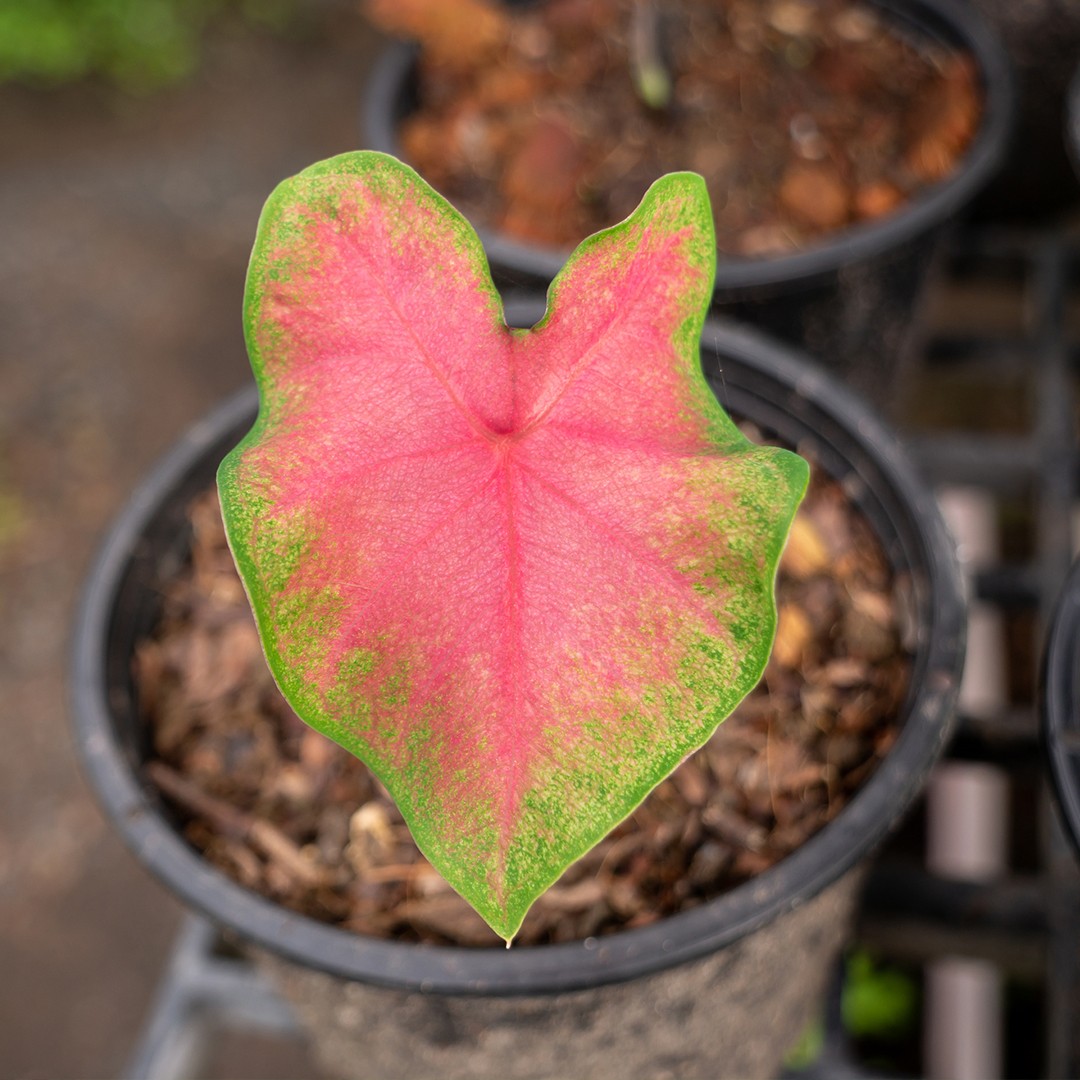








 Just like people, each plant has its own preferences and needs. Devote time to understanding your plants so you can nurture them properly. Observe your plants attentively, learning from their growth patterns, and becoming more in tune with their needs as you grow together. Keep a watchful eye on new plants and seedlings, as they are sensitive to both overwatering and underwatering. Shower them with gentle love and attention, fostering their growth and strength. Let the rhythm of your local climate guide your watering habits, adapting your schedule to the changing weather and the needs of your plants.
Just like people, each plant has its own preferences and needs. Devote time to understanding your plants so you can nurture them properly. Observe your plants attentively, learning from their growth patterns, and becoming more in tune with their needs as you grow together. Keep a watchful eye on new plants and seedlings, as they are sensitive to both overwatering and underwatering. Shower them with gentle love and attention, fostering their growth and strength. Let the rhythm of your local climate guide your watering habits, adapting your schedule to the changing weather and the needs of your plants. 





















